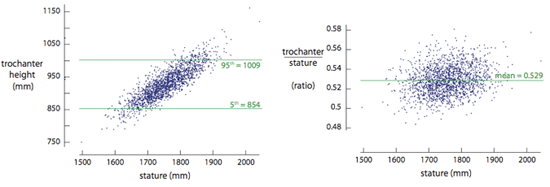Designing for human variability frequently necessitates an estimation of the spatial requirements of the intended user population. These measures are often obtained from “proportionality constants” which predict the lengths of relevant anthropometry using stature. This approach is attractive because it is readily adapted to new populations–only knowledge of a single input, stature, is necessary to obtain the estimates. The most commonly used ratios are those presented in Drillis and Contini’s report from 1966. Despite the prevalence of their use, these particular values are limited because the size and diversity of the population from which these ratios were derived is not in the literature, and the actual body dimensions that each ratio represents are not clear. Furthermore, they are often misinterpreted and used inappropriately. This paper introduces a new approach, the “boundary ratio” which mitigates many of these issues. Boundary ratios improve on the traditional application of proportionality constants by: 1) explicitly defining the body dimensions, 2) defining constants for the 5th, 50th , and 95th percentile measures, and 3) providing distinct constants for males and females when necessary. This approach is shown to better model the range of variability exhibited in population body dimensions.

